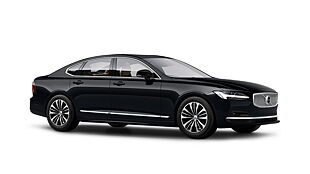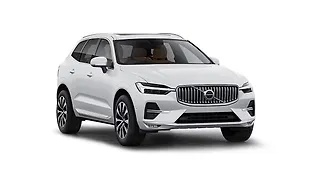What is it?

The entry-level model from Volvo India, the V40 hatchback. A premium, yet slightly unorthodox option for the likes of the Mercedes-Benz A-Class, BMW 1 Series and the five-door Mini Cooper.
The V40 looks pretty, at least at first glance. For one, the Pole Star blue that we had for review stands out like a peacock amongst hens. And of course not everyone will like the in-your-face looks, but boy is it a head turner!
It is a big car, it might be shaped like a hatchback, but with the length of close to 4.4 metres, it is similar to the C-segment sedans in length. The basic design is much like the rest of the Volvos with forward leaning stance and simple rounded headlamps and an underrated front grille. This one though, gets treatment from R-Design and that changes the entire character of the car.

The front bumper is busy with aggressive slashes and black inserts that along with the black top create a nice dual-tone effect for the car. Look from the front-three-quarter and the car appears to be sedate and only the full front view gives away its demeanor. The side profile highlights the broad shoulder line that runs from headlamp to the tail and the classy looking 17-inch alloy-wheels that are part of the design pack.
However, it is the rear that is the most striking. The C-shaped tail lamps that extend on to the side profile look beautiful and so does the black contrasting tailgate. And yet it is the one work of R-Design on the rear bumper that makes this one special. The twin-exhaust and the rear diffuser are taken straight from one of the race cars; it changes the whole character of the V40 making it look sporty and rather unlike most of the Volvos that we know.
How is it on the inside?

This V40 is the perfect car to break the notion that the Volvos are for the old and boring. The all-black interior is a sporty affair with aluminium inserts, contoured seats and double stitched leather upholstery for everything including the door trims.
The front seats are comfortable with all the necessary adjustments including the lumbar support and memory function to get it right quickly. Even the rear space looks okay, but feels claustrophobic with smaller windows and limited headroom. The boot is relatively small at 324 litres and loading is a tedious job with the raised floor.
It has lots of features starting with the proximity sensors, parking assist, instrument cluster with TFT display, panoramic moon roof, rain sensing wipers and more. Being a Volvo, it also scores very well on safety – it has seven airbags in the cabin, more than any of its rivals, and then some more with two outside (under the bonnet) for pedestrian safety. And to avoid inflating any of these, the V40 also comes with City Safe function that automatically applies brakes up to 50kmph, in case the driver isn’t paying attention.

While all the features seem to work well, they are put together in a manner that would make it difficult for even the most tech savvy to get around. The centre console looks like a keypad of an oversized mobile phone, while the display on the top is anorexic. There are several buttons on the steering wheel; half of them control the centre display and the other half the TFT screen.
How does it drive?
The V40 is powered by a 2.0-litre diesel engine producing 150bhp and 350Nm of torque. The power goes to the front wheels via the six-speed automatic transmission that is fairly sluggish considering the segment and price.

It is a fast car, for a diesel hatchback; gets to 100kmph and beyond fairly quickly. It is only past 180kmph that it starts running out of steam, but by then it will leave most vehicles on the Indian roads behind. It is at these speeds that one appreciates the built quality of the Volvos, hardly any noise percolates into the cabin despite running on the concrete roads.
This is a fun car to drive; there is some tendency to understeer if pushed too hard, but in general the steering feels positive and the car remains composed through the corners. The ride quality on the other hand could have been much better, especially at high speeds. The suspension is firm and effects of the smaller undulations on the surface percolate into the cabin. Smaller 16-inch rims from the standard car would fairly improve the ride quality.

The only other problem is the low ground clearance. At 133mm there is hardly any distance between the speed hump and the car’s floor. This means everything on the roads has to be treated with respect and reduced speeds and then there is still no guarantee that one would get over the obstacle without some butt clenching.
Why should I buy one?
The V40 is a good looking car with a strong engine, large features list and a safety package like no other. It is one of those brands that allow you the opportunity of picking a niche product without having to worry about the brand.

At Rs 27.70 lakh (ex-Delhi) it is seems like a great value, and if you are not much into aesthetics, the standard model sans the design package and the panoramic roof looks even better at Rs 24.75 lakh. The hatchback might not have the biggest boot in the segment or the even the rear space for three, but neither of its competitors fare any better.
Where does it fit in?
The V40 competes mainly with the Mercedes-Benz A-Class and the BMW 1 Series and seems to beat them fair and square. It, the more powerful than the two, has more features and safety but most importantly, it is also the most affordable among the three.
The V40 is a must-consider option if one is looking at the luxury hatchbacks, just hope that the company is looking at expanding the sales and service network.

![Volvo V40 [2015-2016] Image Volvo V40 [2015-2016] Image](https://imgd.aeplcdn.com/272x153/cw/cars/volvo/v40-only.jpg?q=80)
























